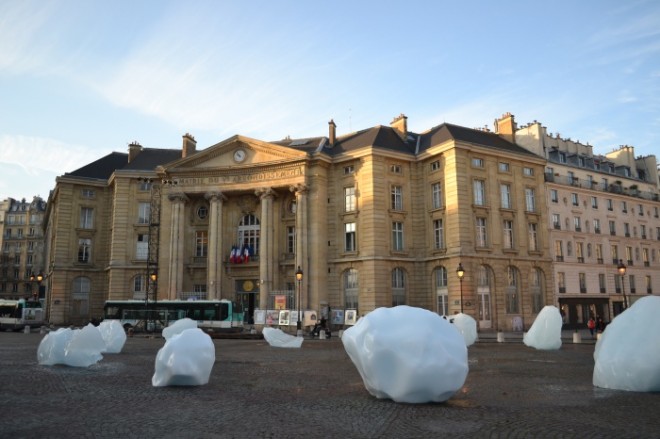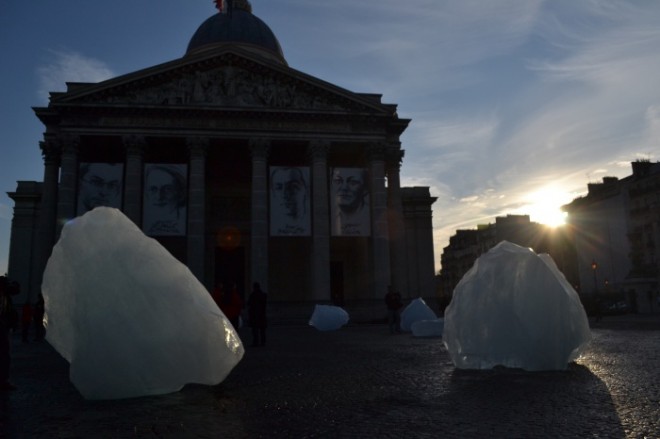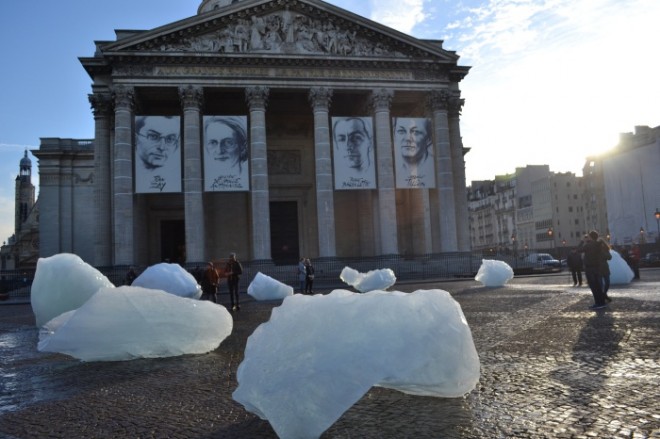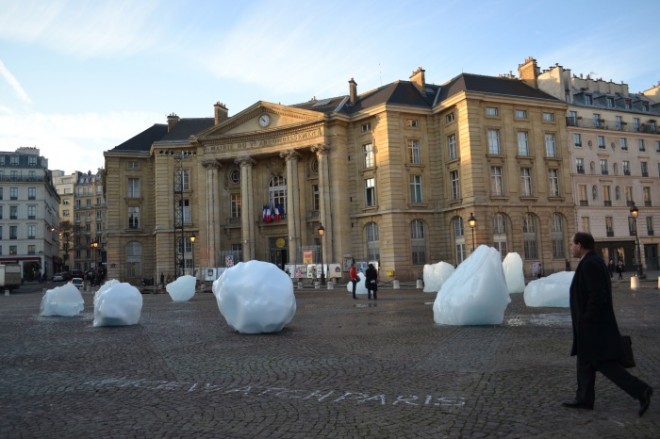These images may be the most moving from Paris COP21
PARIS—As the world’s negotiators returned to the Le Bourget convention center just outside this city today to resume work on a proposed universal and legally binding climate change treaty, the Greenland ice sheet was melting right in the heart of the country.
Literally. A conceptual installation by the Danish-Icelandic artist Olafur Eliasson brought 12 large blocks of ice that had broken off from the Greenland ice sheet to the square in front of the Pantheon, where French immortals like Victor Hugo and Voltaire are buried.
Shaped in a circle, the blocks of Arctic ice correspond to the hours on a clock, suggesting that a warming world is running out of time to stop the worst consequences of climate change. Eliasson calls the installation Ice Watch.
The Ice Watch does nothing but melt. But to visitors who go to the site, or touch the ice, or notice the difference in density between the blocks, or see the steady dripping of icewater, the experience can be unexpectedly stirring. “It is very moving,” visitor Pierre Laburthe told INQUIRER.net, bringing a closed fist close to his chest for emphasis.
While many visitors pause only briefly in front of the blocks and then have their pictures taken (the Eiffel Tower can be seen in the distance), others stare at the ice for many minutes, as though hypnotized by the continuous and irreversible dripping.
One of the volunteers overseeing the installation, Maia Ferrari, said she hoped the ice from the Greenland ice sheet would last “until next Sunday,” meaning December 13, the Sunday after the 21st Conference of Parties (COP21) of the UN Framework Convention on Climate Change ends. “But that depends on the weather, of course.”
Given the momentum created by the breakthrough consensus on a 21-page draft agreement last Saturday, the chances are good that COP21 will conclude with a new accord or protocol. Whether the resolutions included in the new agreement will stop the heating of the planet — the most important decision point being the target ceiling in the rise of global temperature, whether “below 1.5 degrees” Celsius or “well below 2 degrees” — remains to be seen. Part of the proof will be whether Arctic ice, such as the ones that found their way to Paris, will continue to melt.




